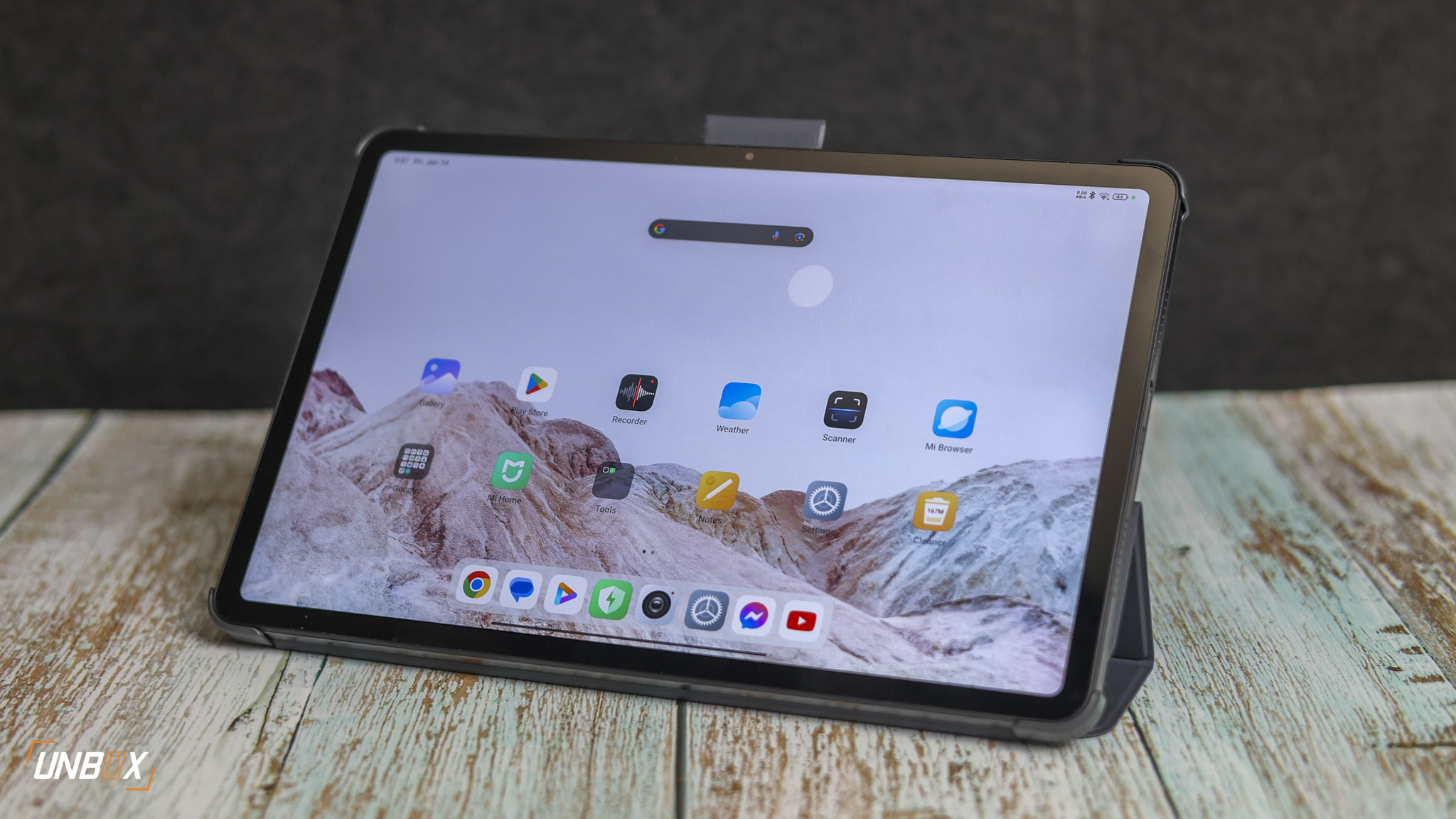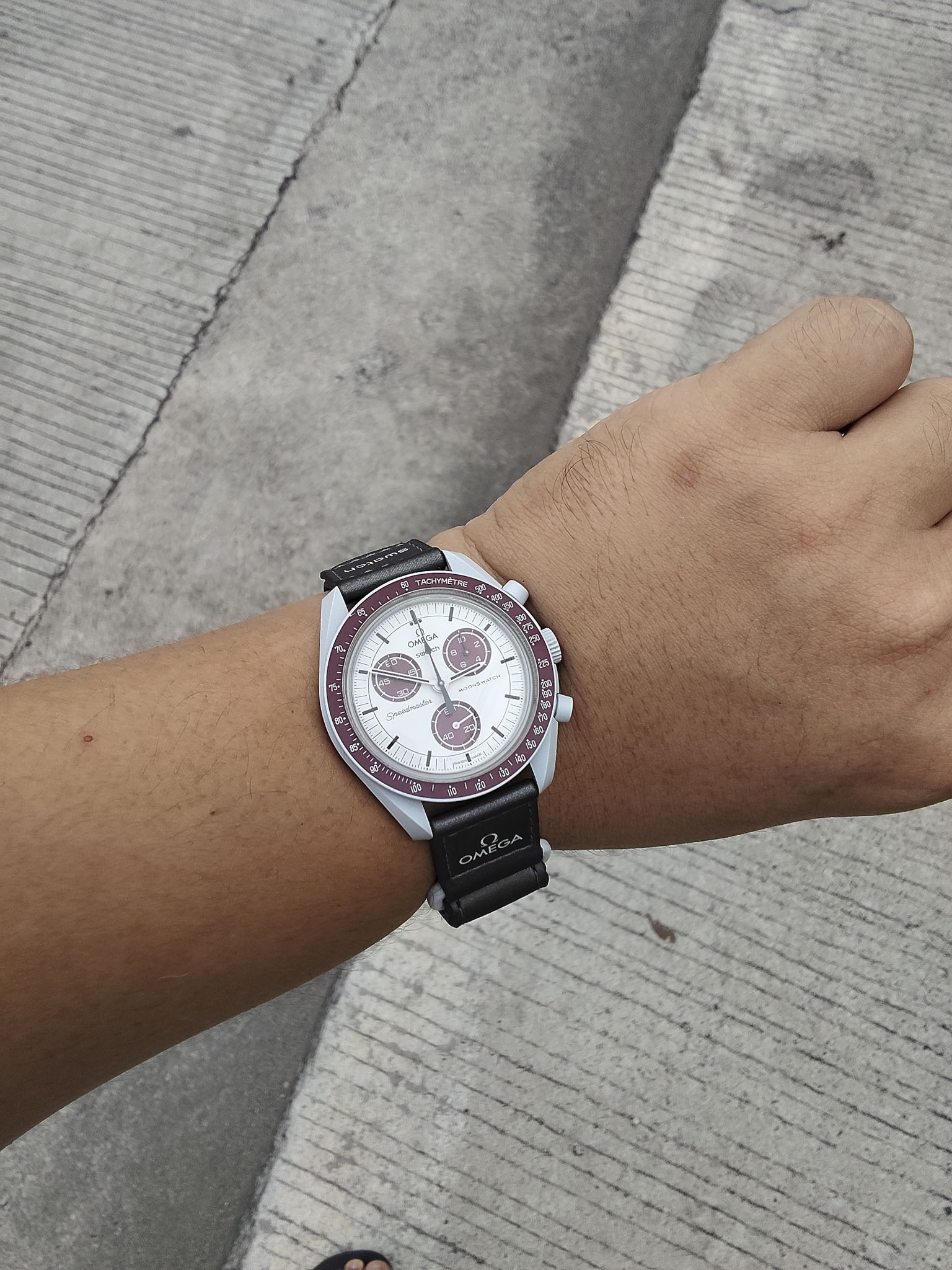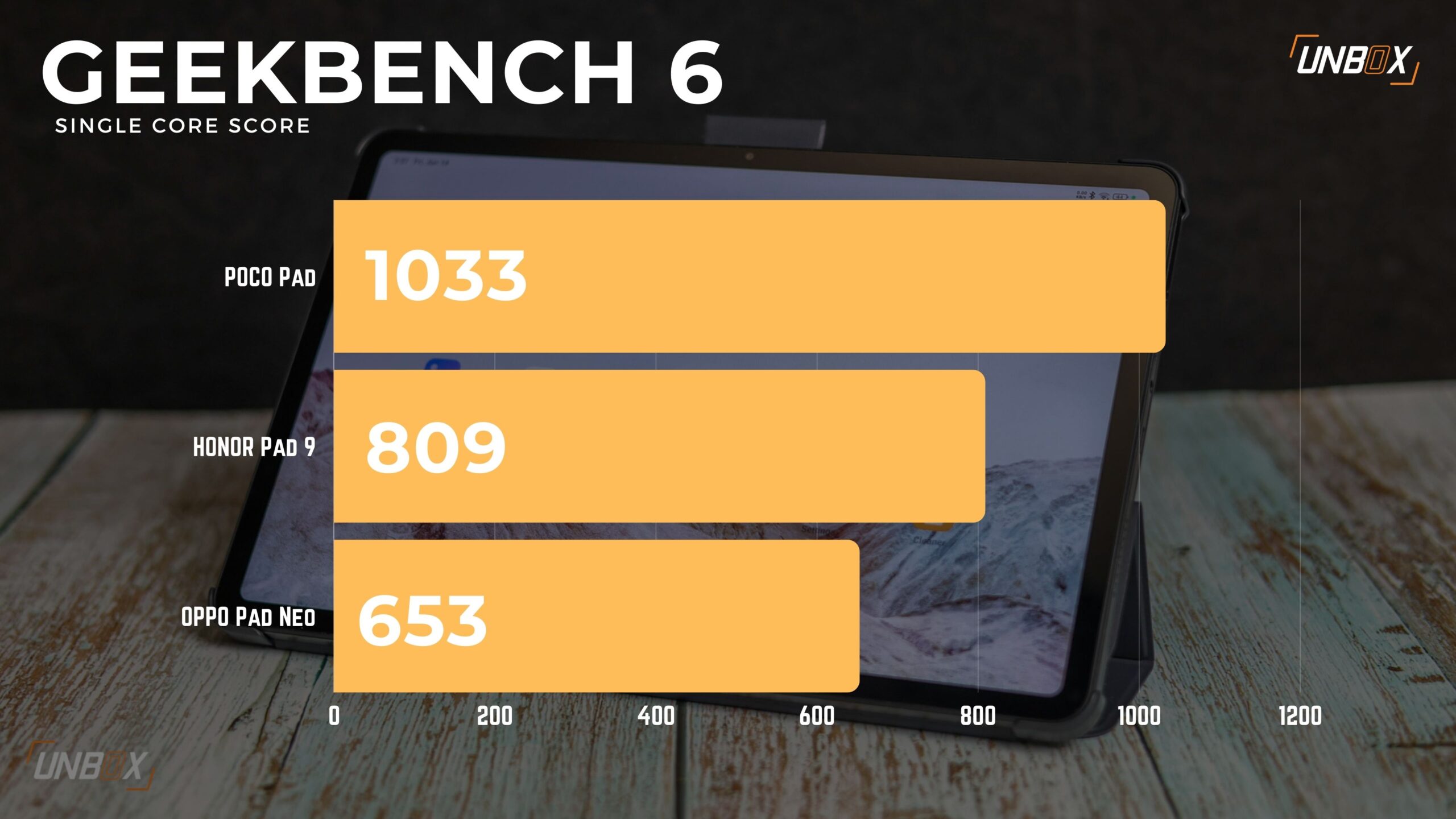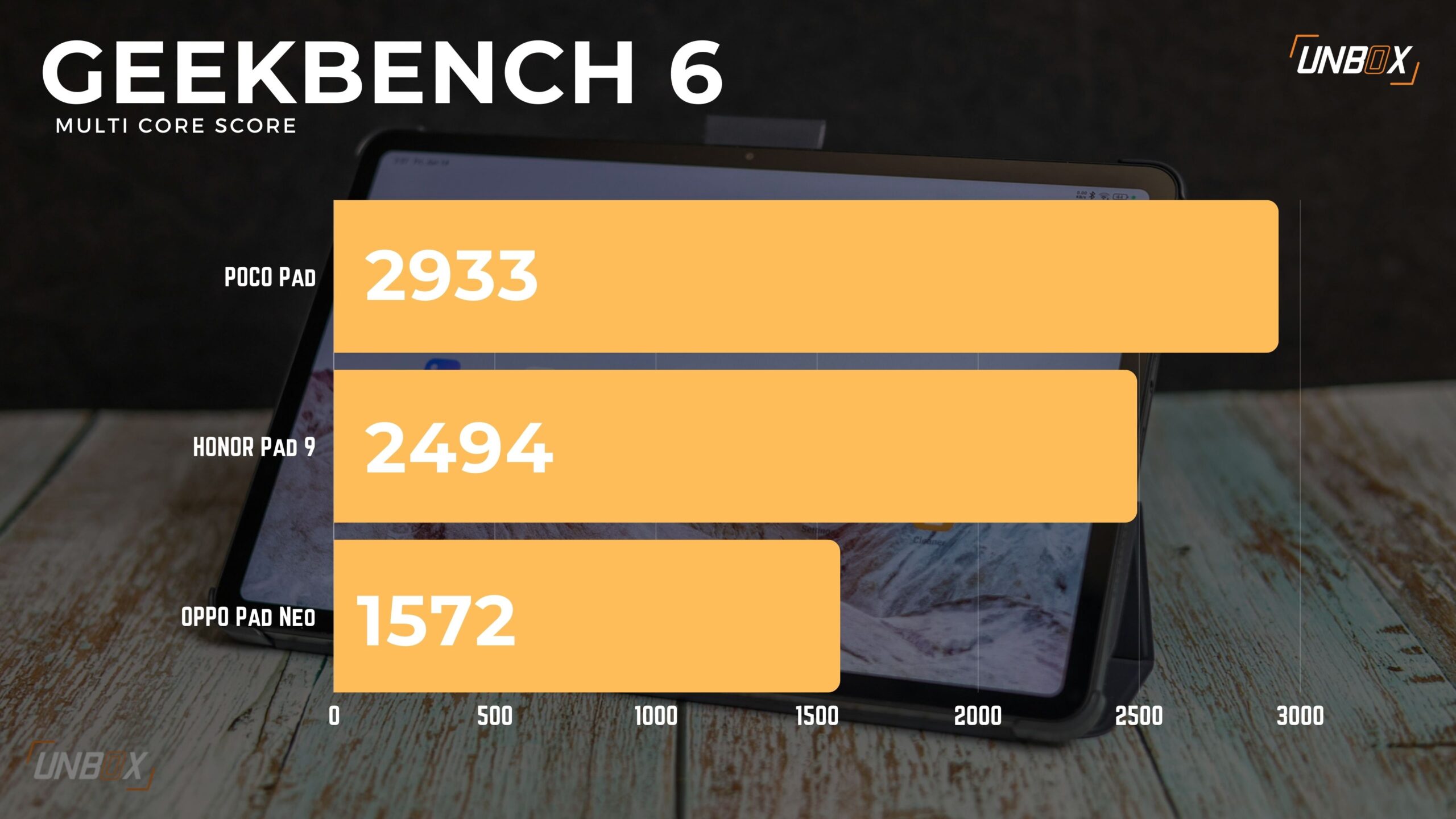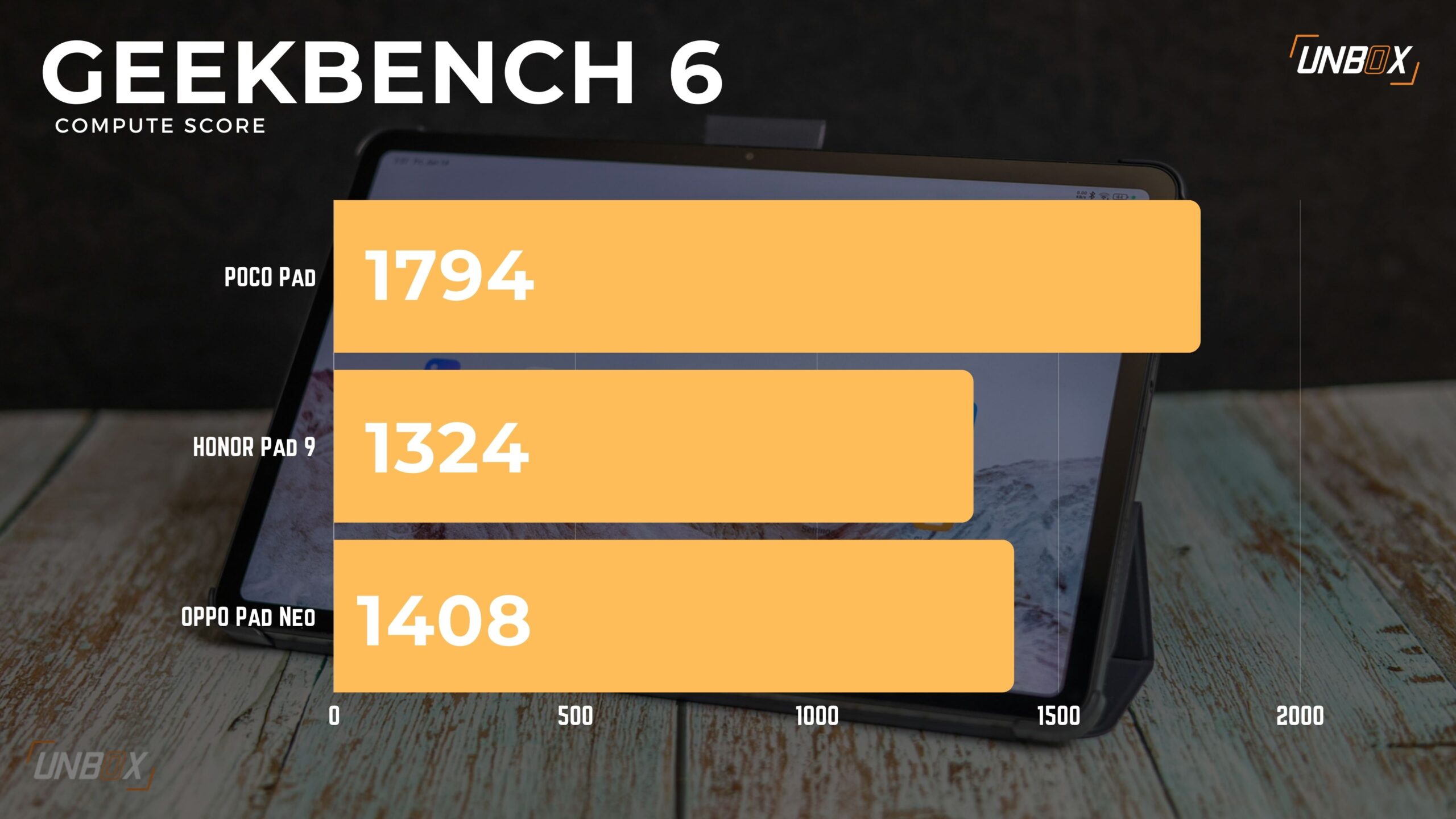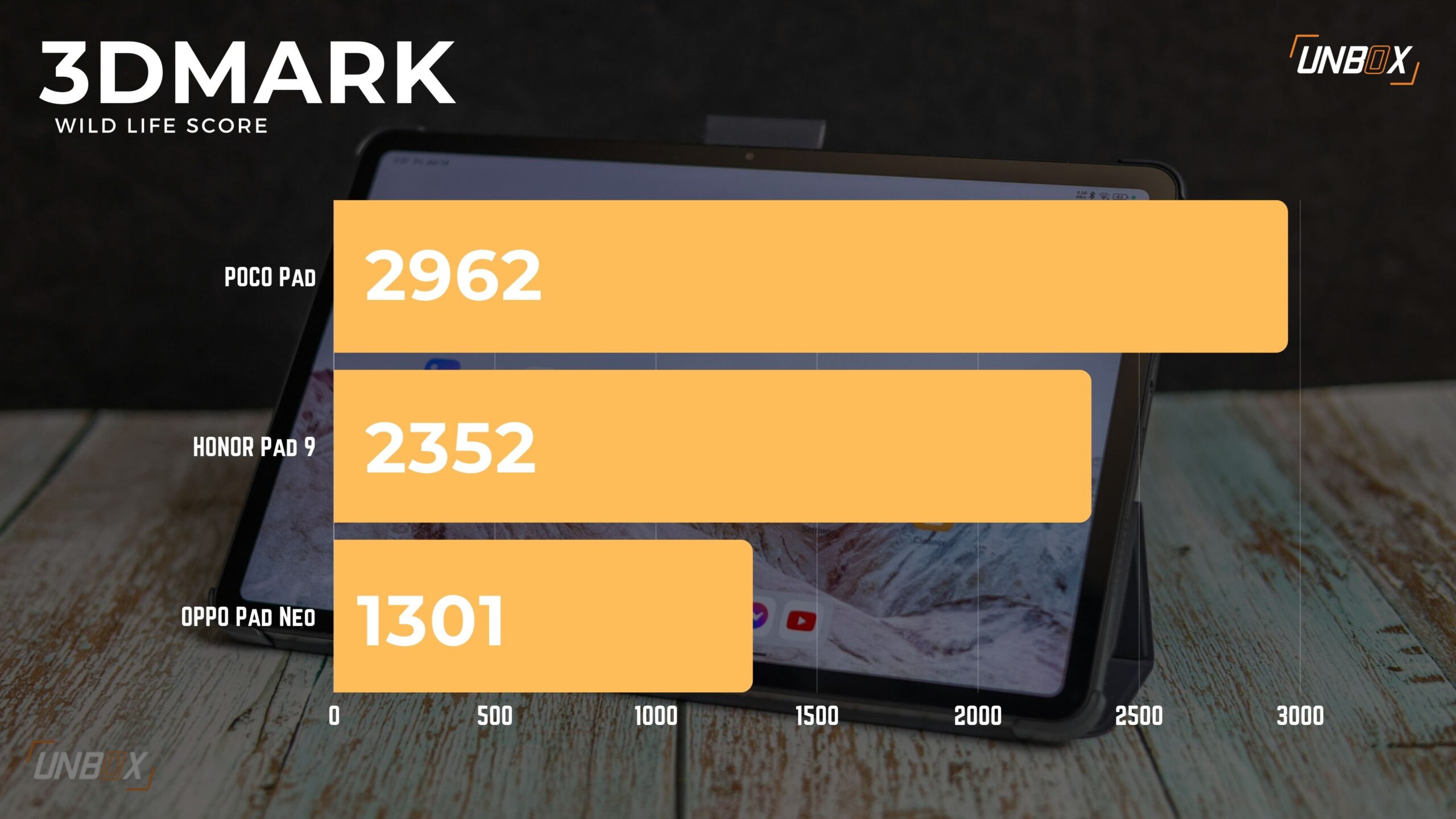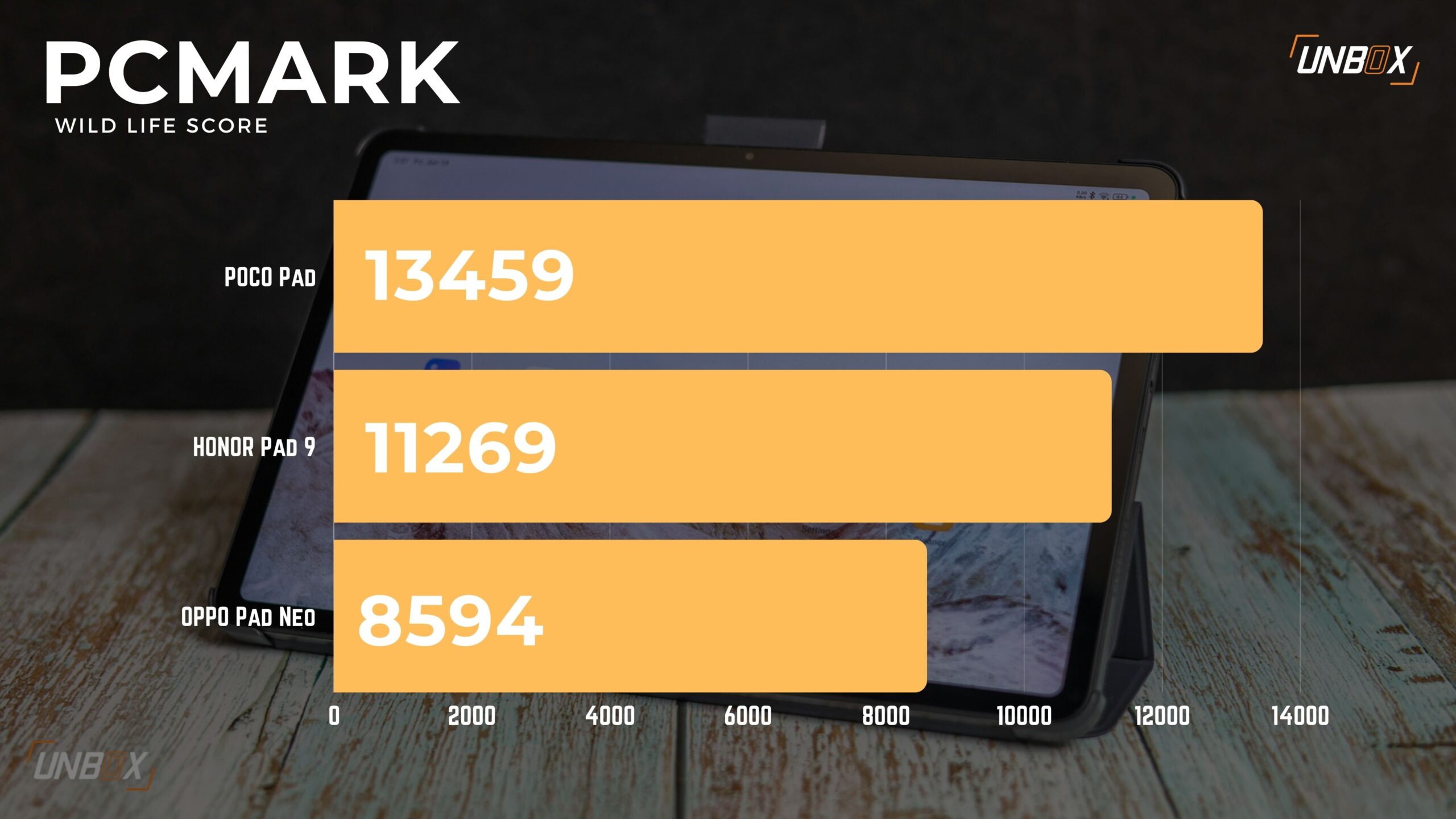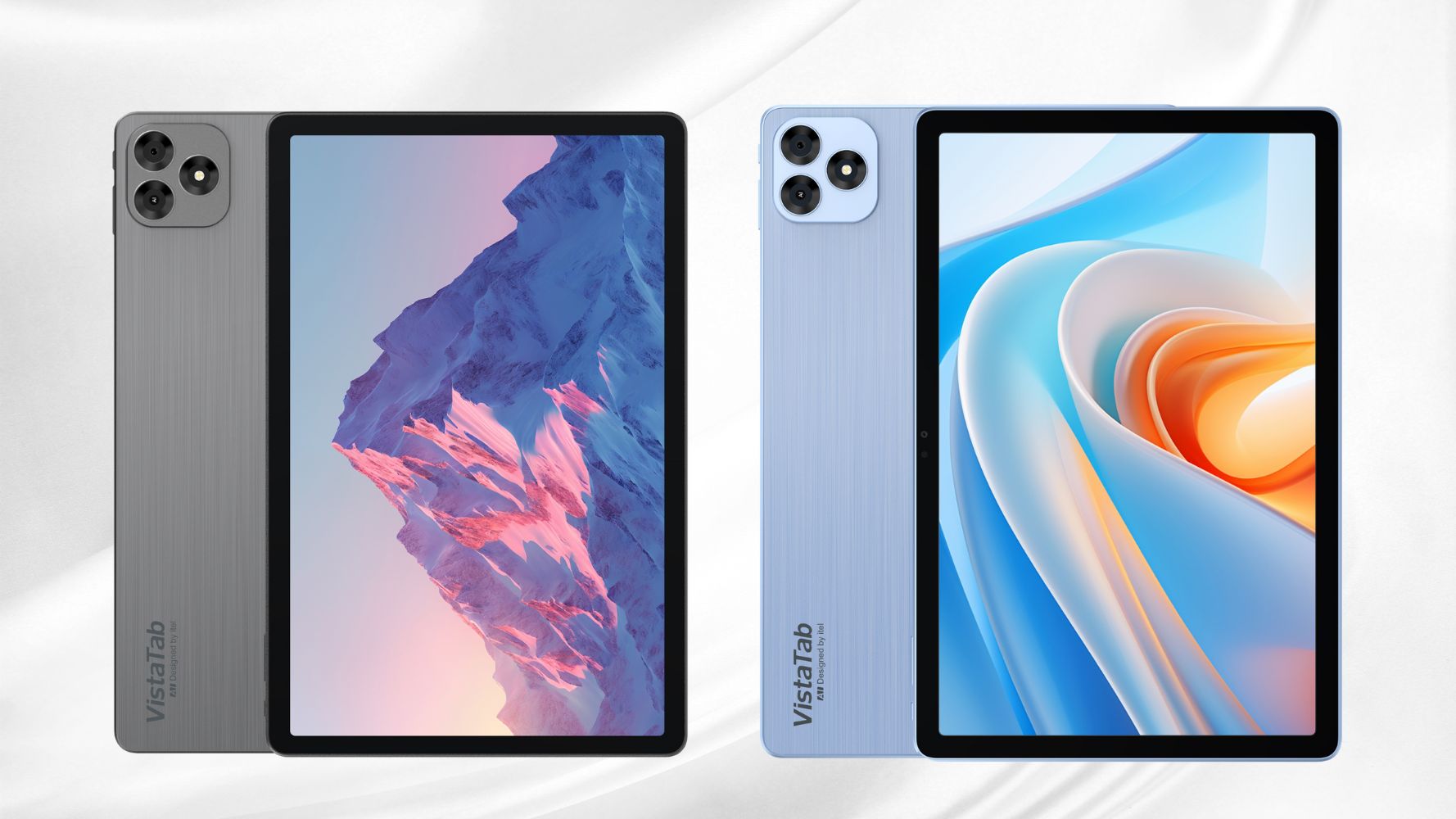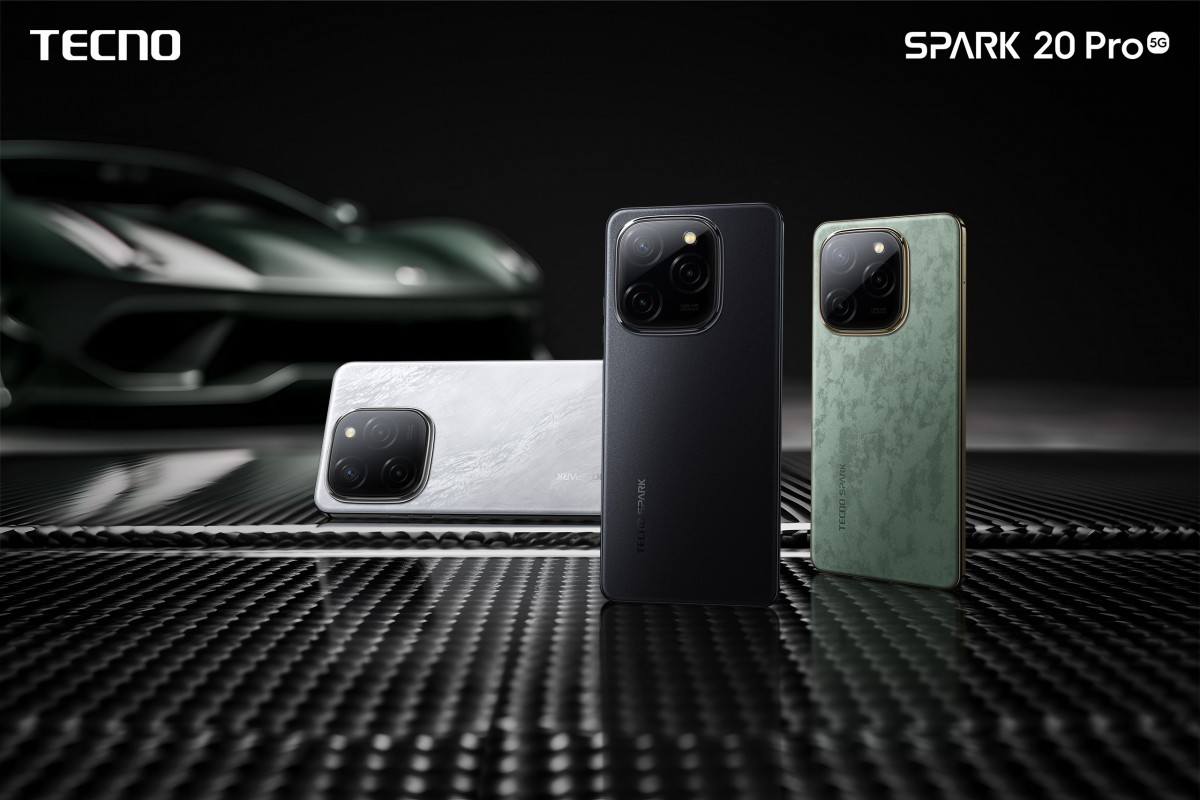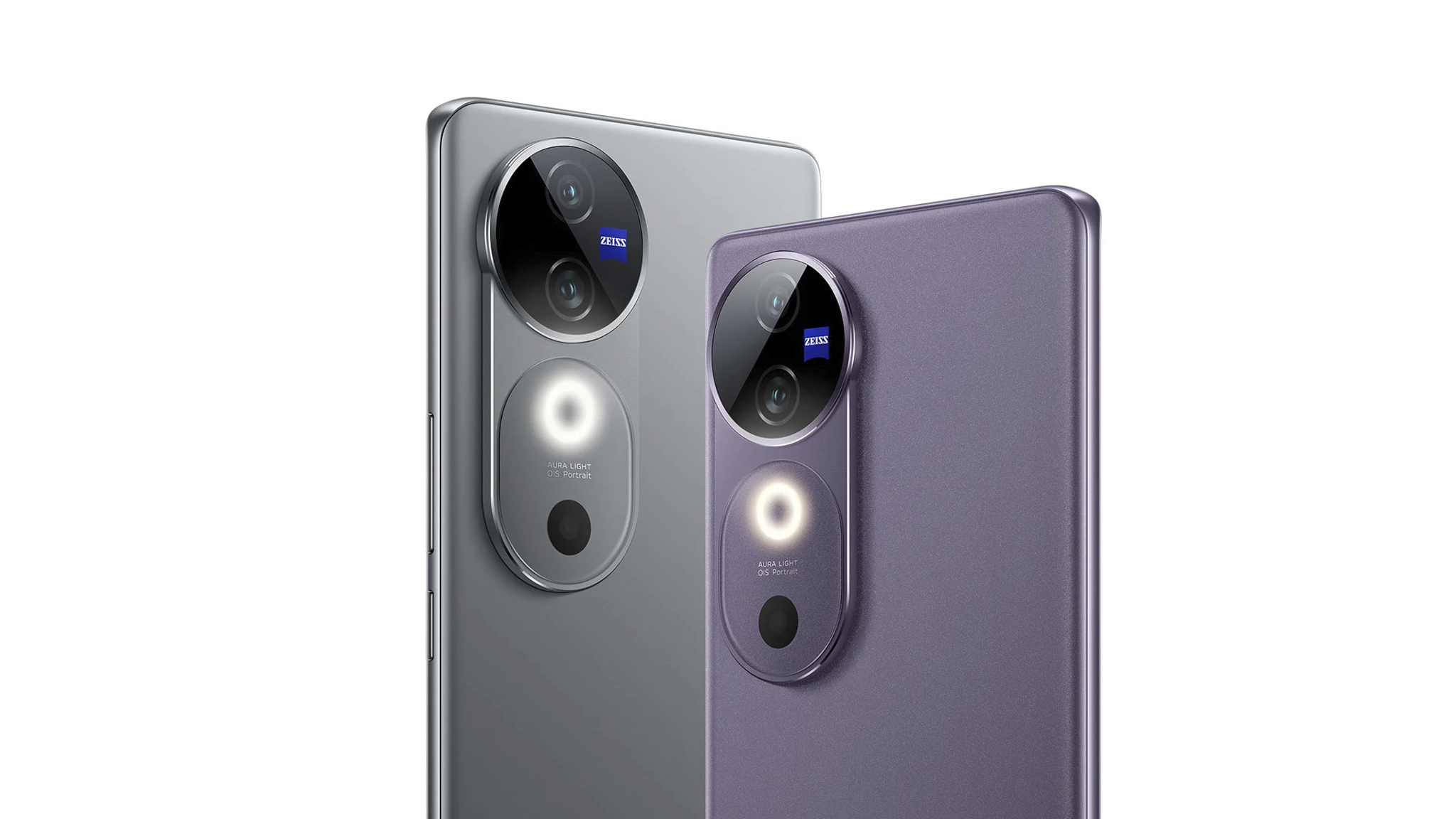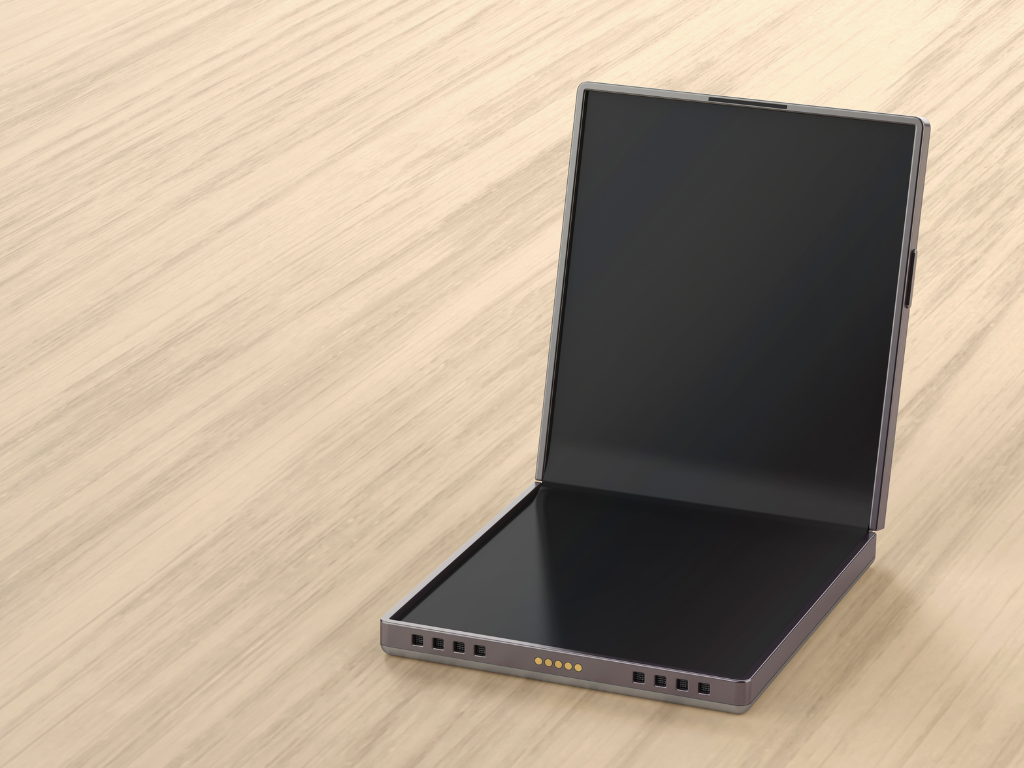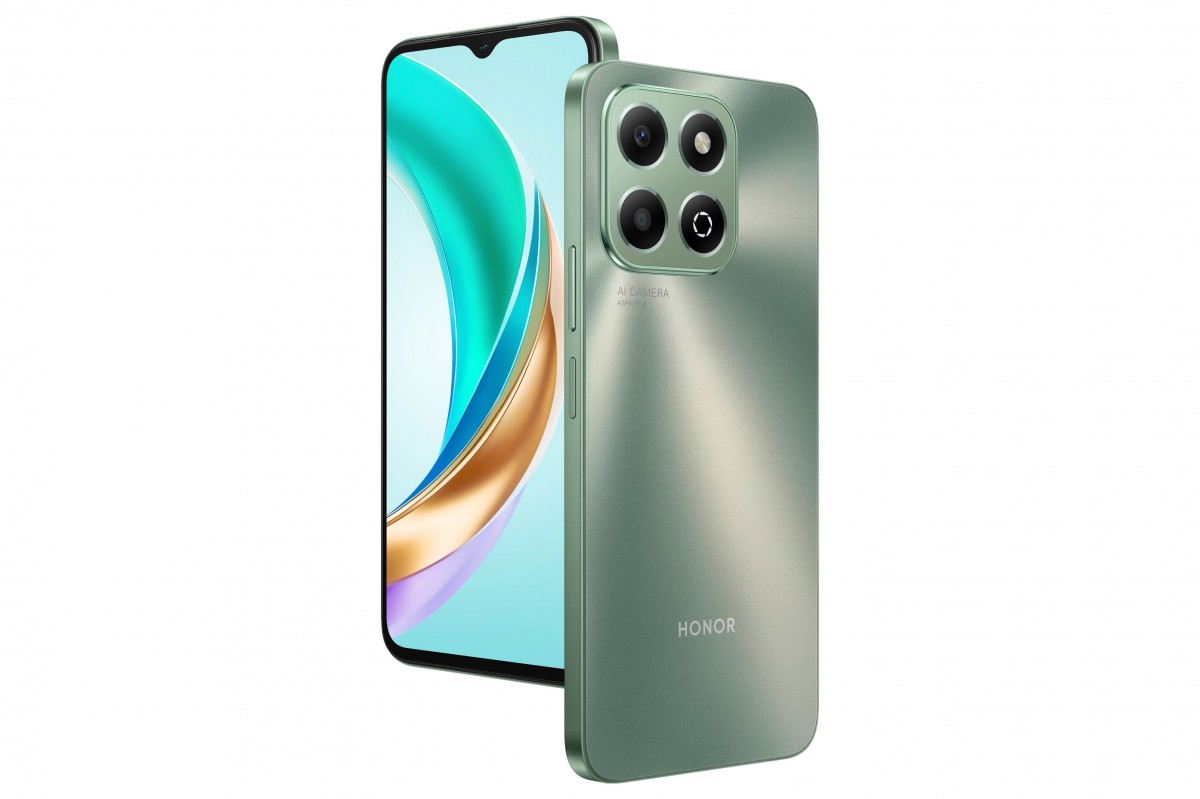Review Verdict: The POCO Pad offers good value as a mid-range tablet in the Philippines. However, some of its game-changing software features cannot be maximized for now.
Pros
- Great display especially for videos
- Good choice of internals for its price
Cons
- New features are not yet available
- No cellular connectivity option
POCO also has a tablet. While that may sound unusual for a brand that’s more known for its bang-for-the-buck phones, having a tablet is part of POCO’s ambitions to create an ecosystem among its products. After spotting it in Dubai during the launch of the F6 and F6 Pro, we spent more time with the POCO Pad to see if it is a mid-range tablet worth considering in the Philippines.
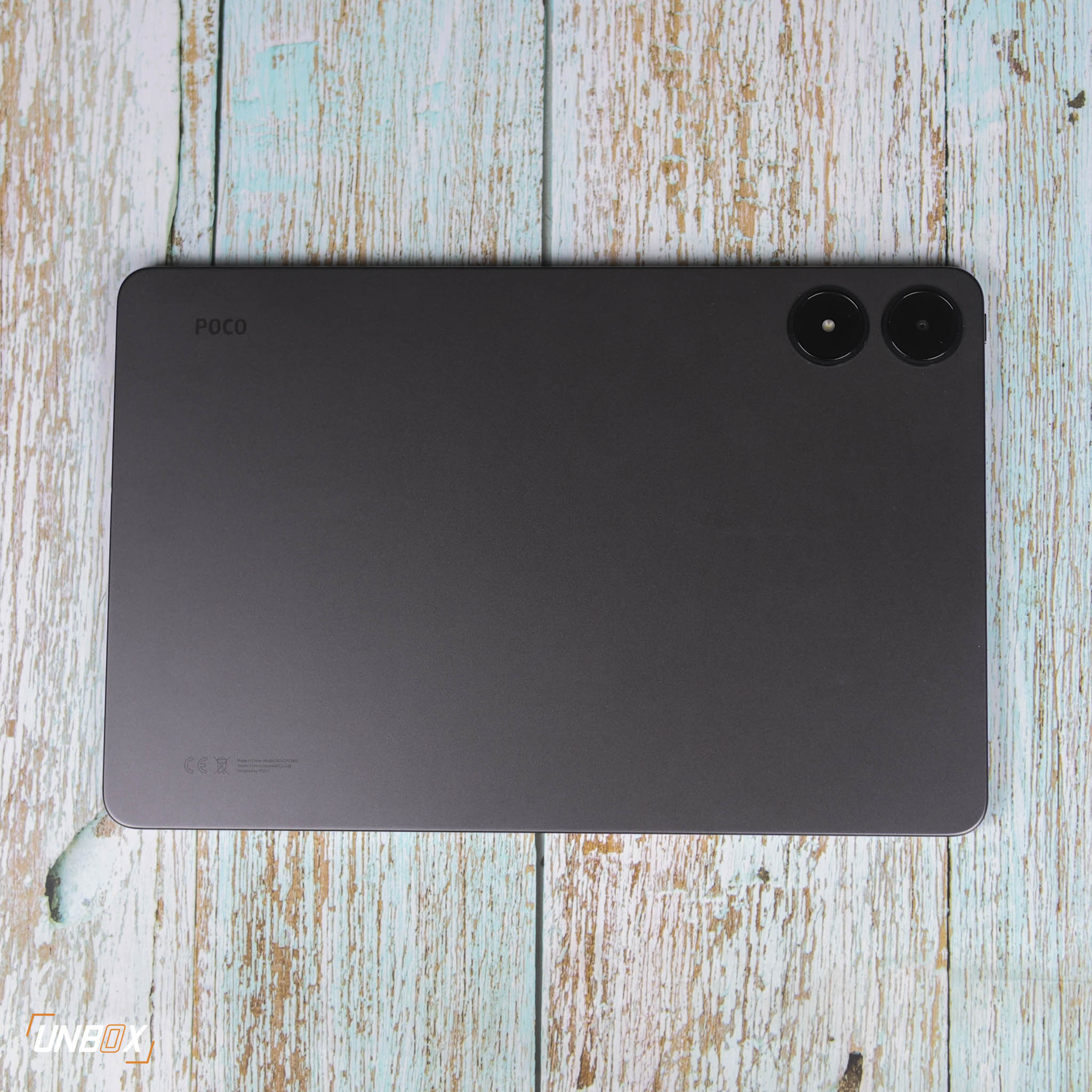
POCO Pad Review Philippines: Design
The POCO Pad’s unibody frame feels similar to what we experienced with the Redmi Pad SE. It has a brushed finish and only comes in grey and blue–with our review unit being the former. While it is a large tablet, the POCO Pad weighs 571 grams and does not feel too heavy.
The quad-speaker system is arranged in landscape orientation, and there’s a tray on top for a MicroSD card–there’s no slot for a SIM card, and we’re unsure if Xiaomi has plans to bring a tablet to the Philippines with cellular connectivity.
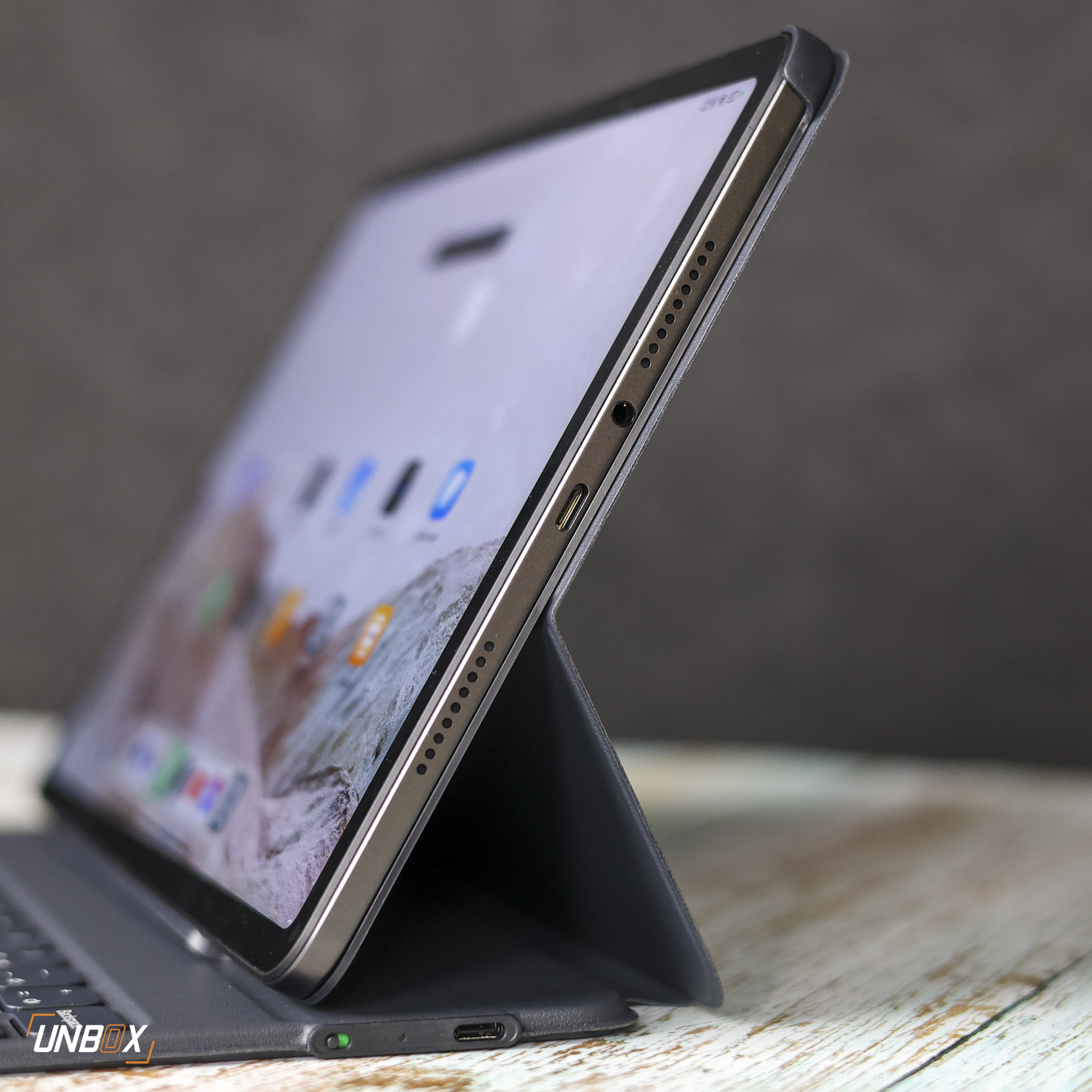
Aside from the usual USB-C port at the bottom, power button on top, and volume controls on the right side (in portrait orientation), the POCO Pad stands out from other mid-range tablets in the Philippines by offering a headphone jack. Several devices have been killing the much-beloved 3.5mm port, and it’s nice to see the likes of the POCO Pad still have it.
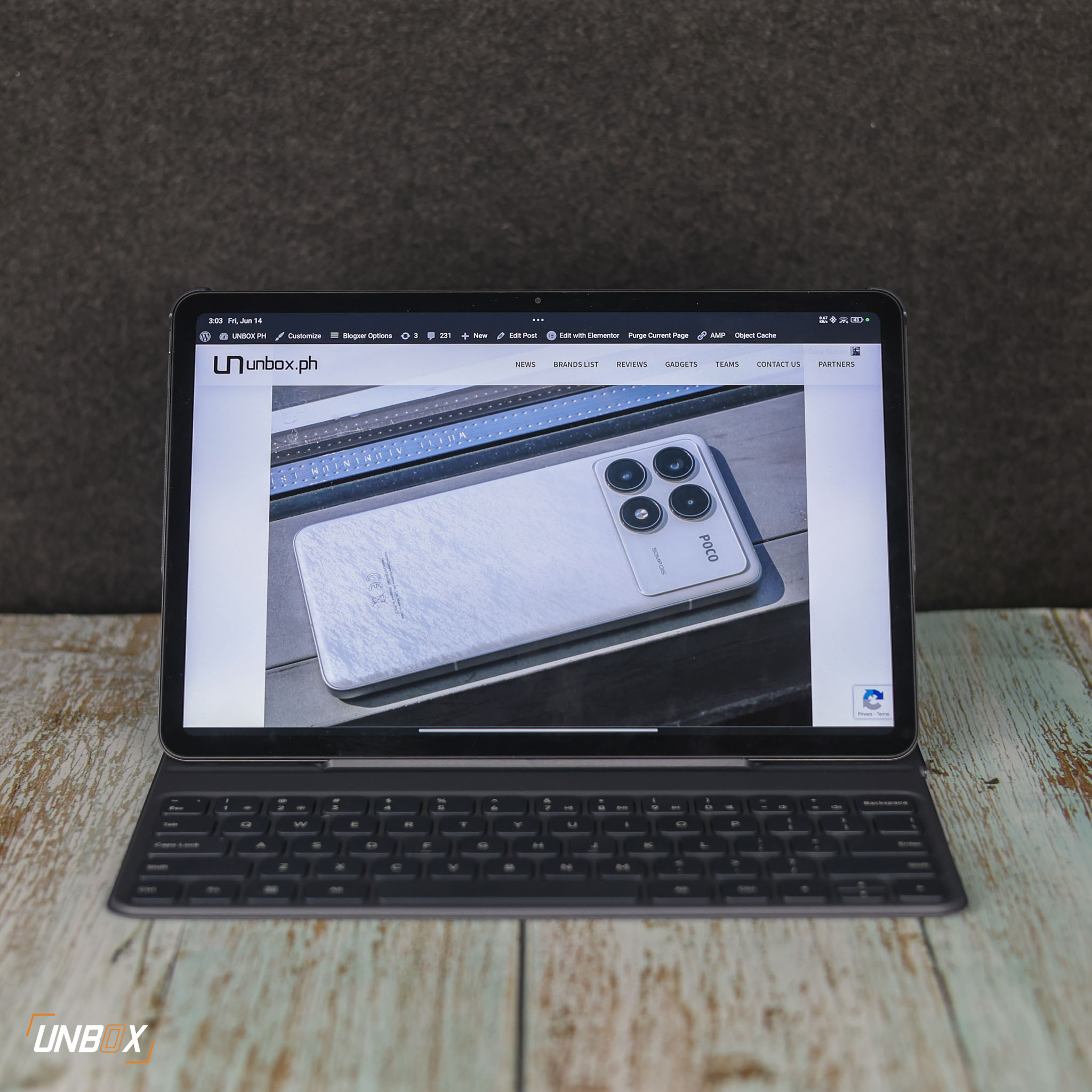
POCO Pad Review Philippines: Display
The POCO Pad has a huge 12.1-inch IPS display that has a 2.5k (2560×1600) resolution and a 120hz refresh rate that adjusts dynamically based on the content you’re viewing. The display has a 16:10 aspect ratio, making the POCO Pad great for watching videos, especially Netflix shows.
Aside from having Widevine L1, the POCO Pad supports Dolby Vision, letting you enjoy videos with a wider dynamic range for a more immersive watching experience.
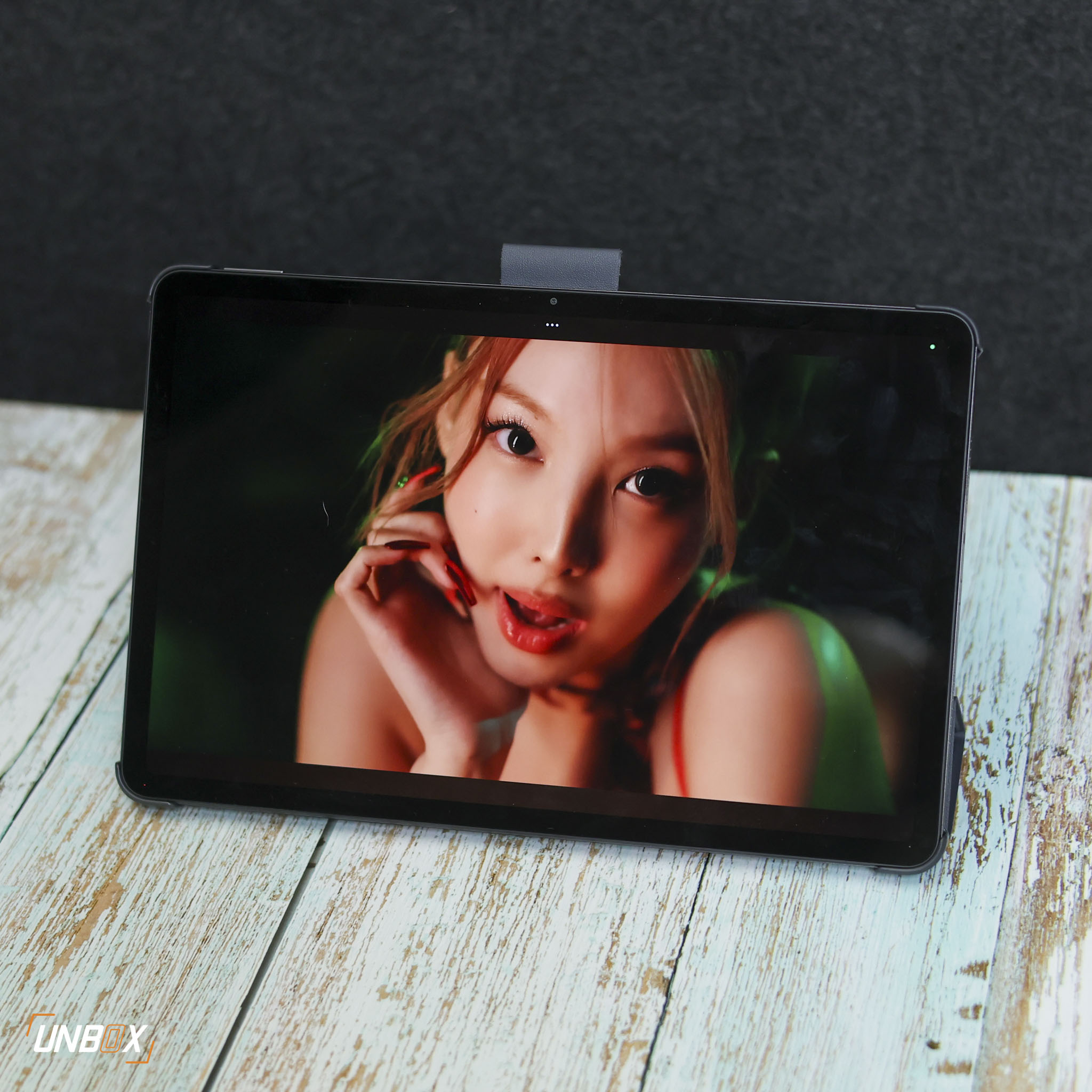
Speaking of immersive, the POCO Pad’s quad-speaker system has a good soundstage with a good balance between lows, mids, and highs. They also have a good loudness range–we kept the volume at around 75% for our Netflix binge-watching and Spotify listening sessions, and we found it sufficient.
If we prefer to listen using earphones, it’s nice to have that headphone jack on the POCO Pad–a wired connection will always be better compared to a wireless one.
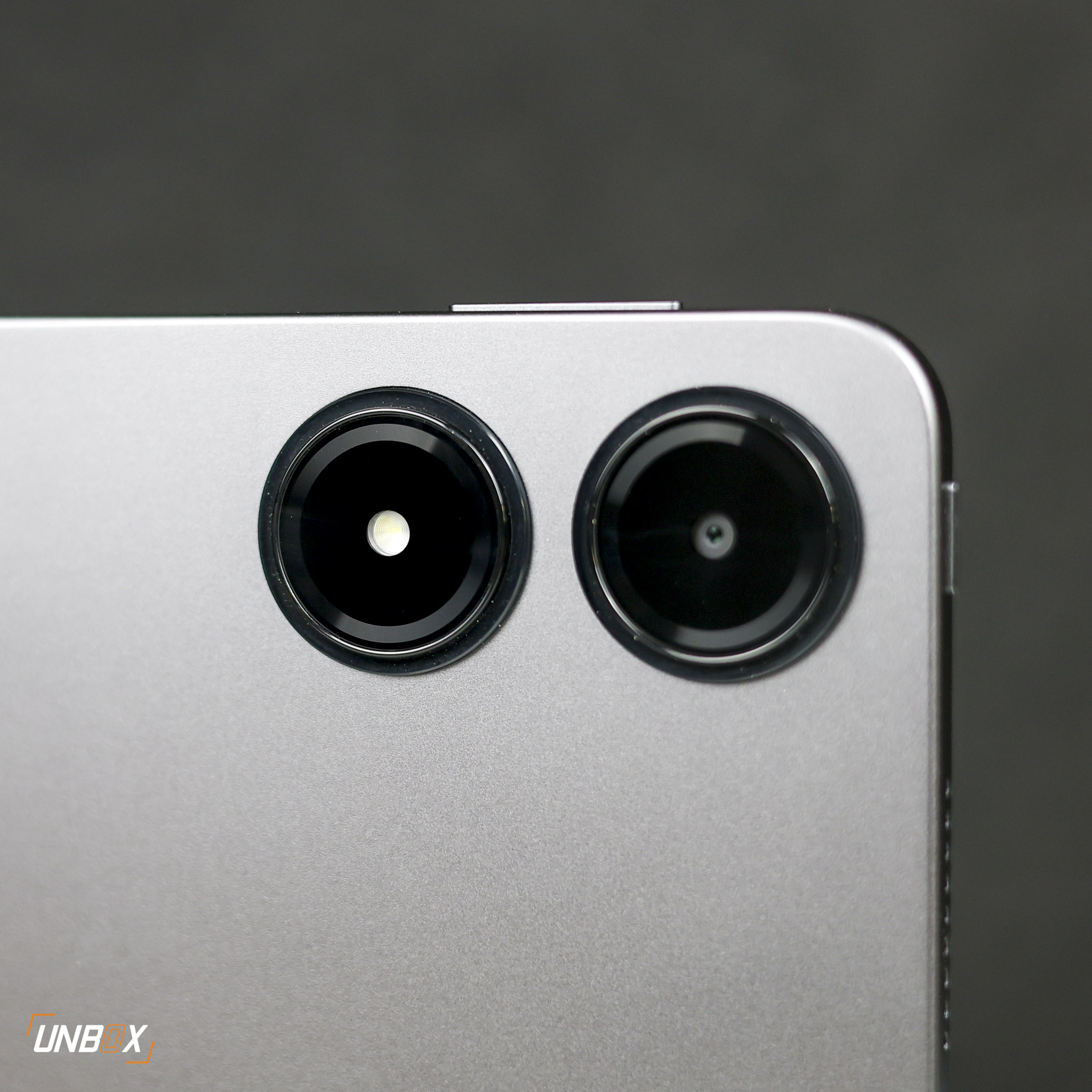
POCO Pad Review Philippines: Cameras
The POCO Pad comes with a basic set of cameras that consists of 8-megapixel shooters for both the front and back. The image quality on the rear camera is comparable to older budget phones, which should not be a big deal since we doubt if you’d use a big tablet like the POCO Pad for taking photos.
In general, the photos are shareable for social media when shooting in daylight, but start to struggle when you shoot indoors with less lighting. Since cameras are not a priority, video recording on the POCO Pad is limited to Full HD–again not a big deal for a tablet this big.
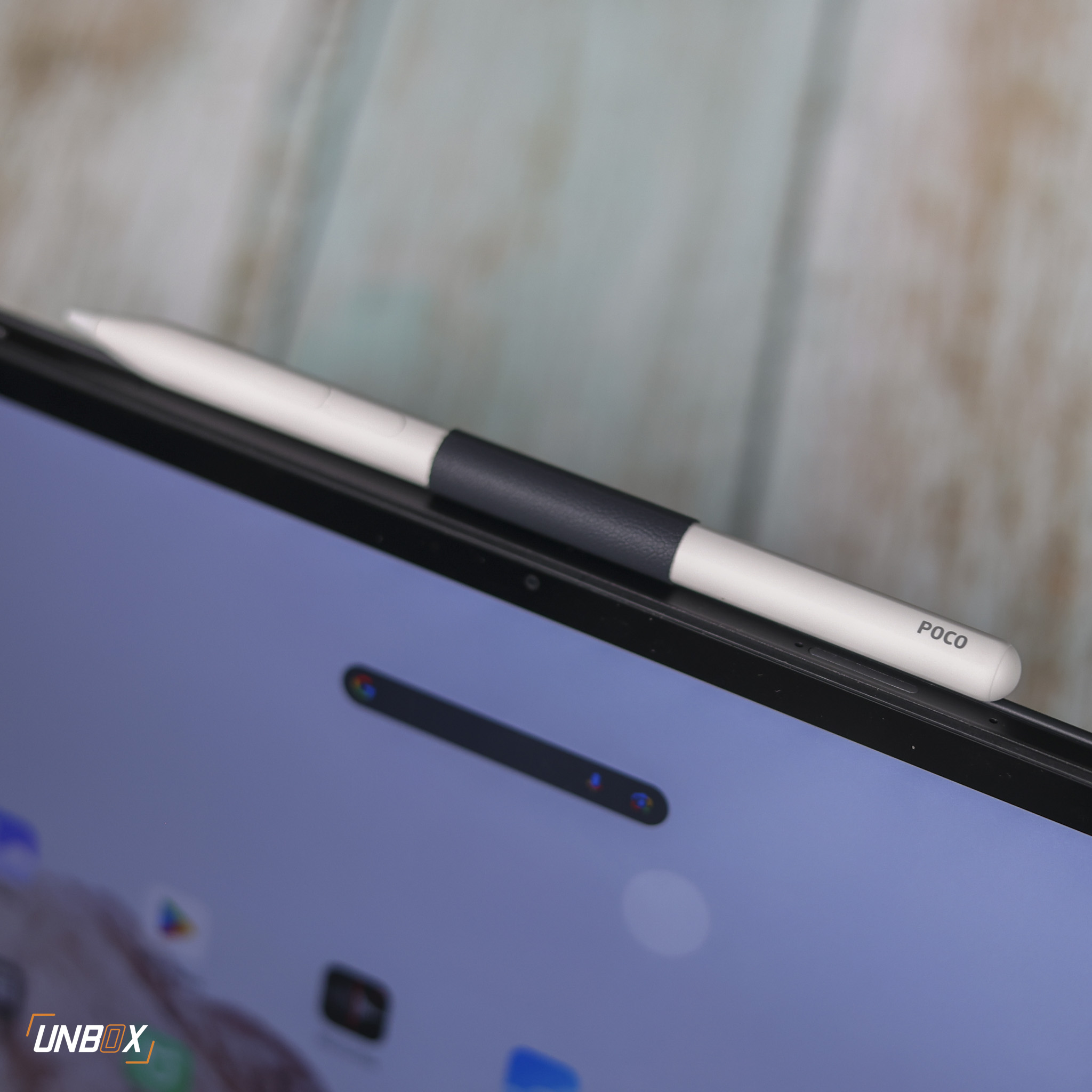
POCO Pad Review Philippines: Internals and Battery Life
The POCO Pad is competitive with its internals thanks to its use of a Snapdragon 7s Gen 2 processor that’s paired with 8GB LPDDR4X RAM and 256GB UFS 2.2 internal storage–with the latter being expandable via MicroSD.
The Snapdragon 7s Gen 2 is a processor we’ve tried several times on phones like the Redmi Note 13 Pro, and it is a solid choice for a mid-range tablet. The mid-range chip is roughly at par with the older Snapdragon 870 that’s used on the Xiaomi Pad 6, making the POCO Pad good for both productivity and gaming. While you don’t get the option for cellular connectivity, you do get a MicroSD card slot that can support as much as 1.5TB of additional storage.
The POCO Pad has long legs with its 10000mAh battery, where we got a battery life of 12 hours and 39 minutes in PCMark’s battery benchmark test. That translates to a full day of use before you need to charge it with its 33w charger. Topping up the battery took us around 1.5 hours, which is the average for charging a tablet’s battery.
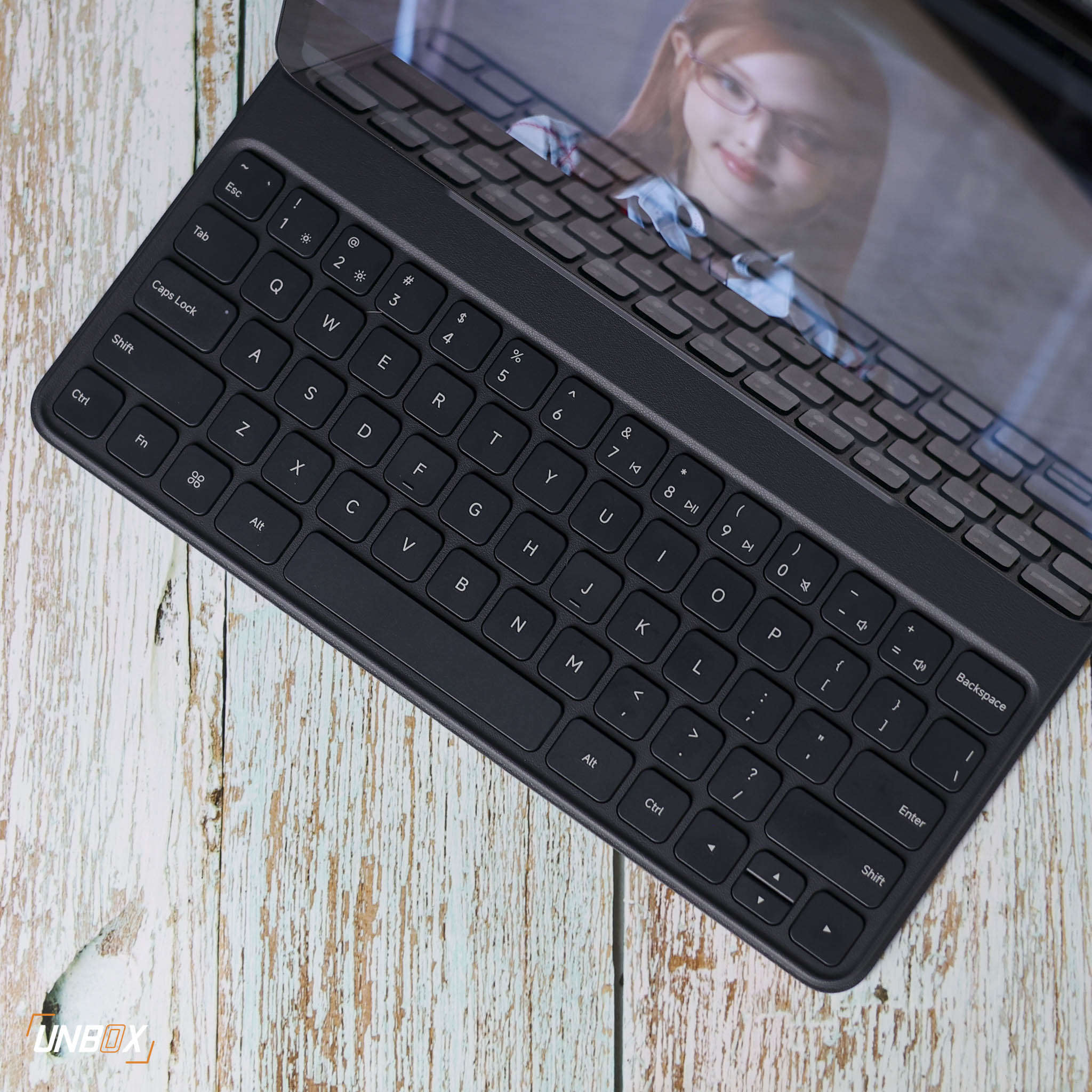
POCO Pad Review Philippines: User Interface
Like the more expensive Pad 6s Pro, the POCO Pad comes with Android 14-based HyperOS, making it part of Xiaomi’s grander plan for a cohesive ecosystem. You also get a good set of accessories that include a keyboard cover, book cover, and POCO Pen. The latter lacks magnetic charging and docking–instead, you have an attachment that you place on either the book cover or the keyboard cover to hold the pen.
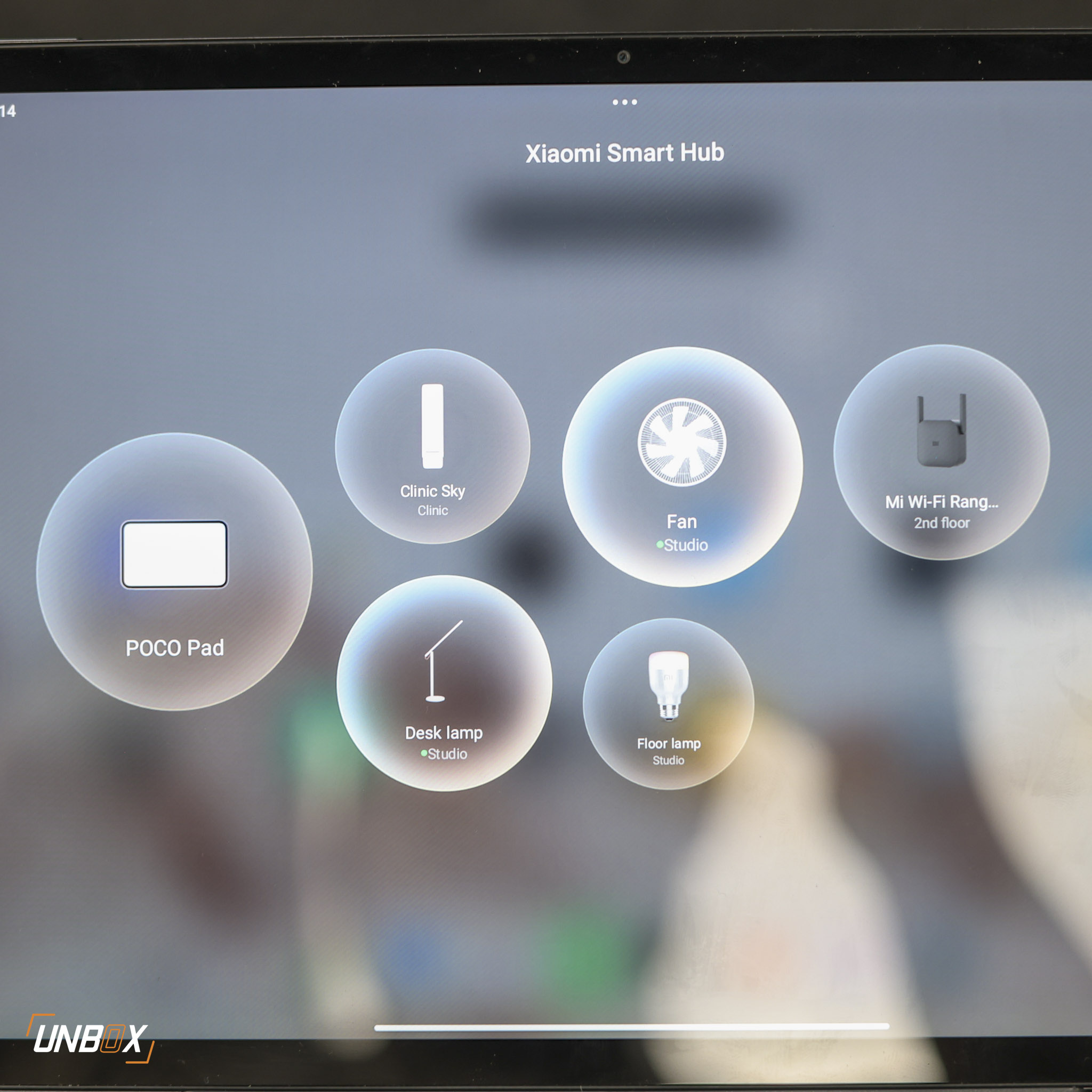
Like our sentiments on the Pad 6s Pro, HyperOS addressed the majority of our complaints with MIUI for Pad when we tried it on the Pad 6. Bloatware is practically absent–and we just hope that POCO also does the same thing to their phones as well. The POCO Pad even adds an Interconnectivity feature that lets you use a supported POCO device (ie. F6 or F6 Pro) on the tablet and interact with it from there. The feature is also meant to give the POCO Pad “cellular connectivity” by utilizing a paired POCO phone as a hotspot.
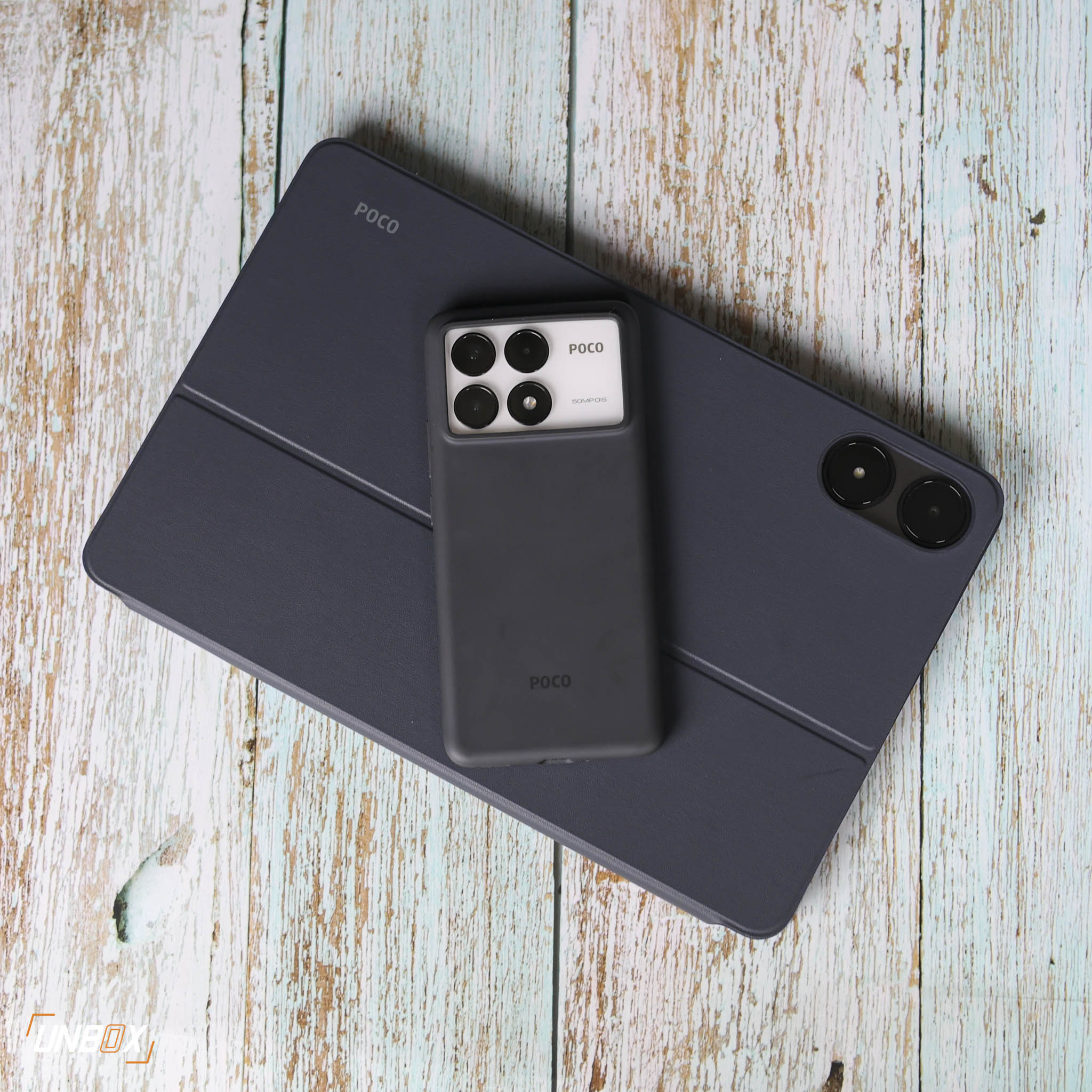
The catch with this is that we could not get Interconnectivity to work with our F6 Pro despite both POCO devices being signed in using the same Xiaomi account. Xiaomi Philippines told us that this will be resolved through a software update, so we might need to wait a few weeks before this game-changing feature is available.
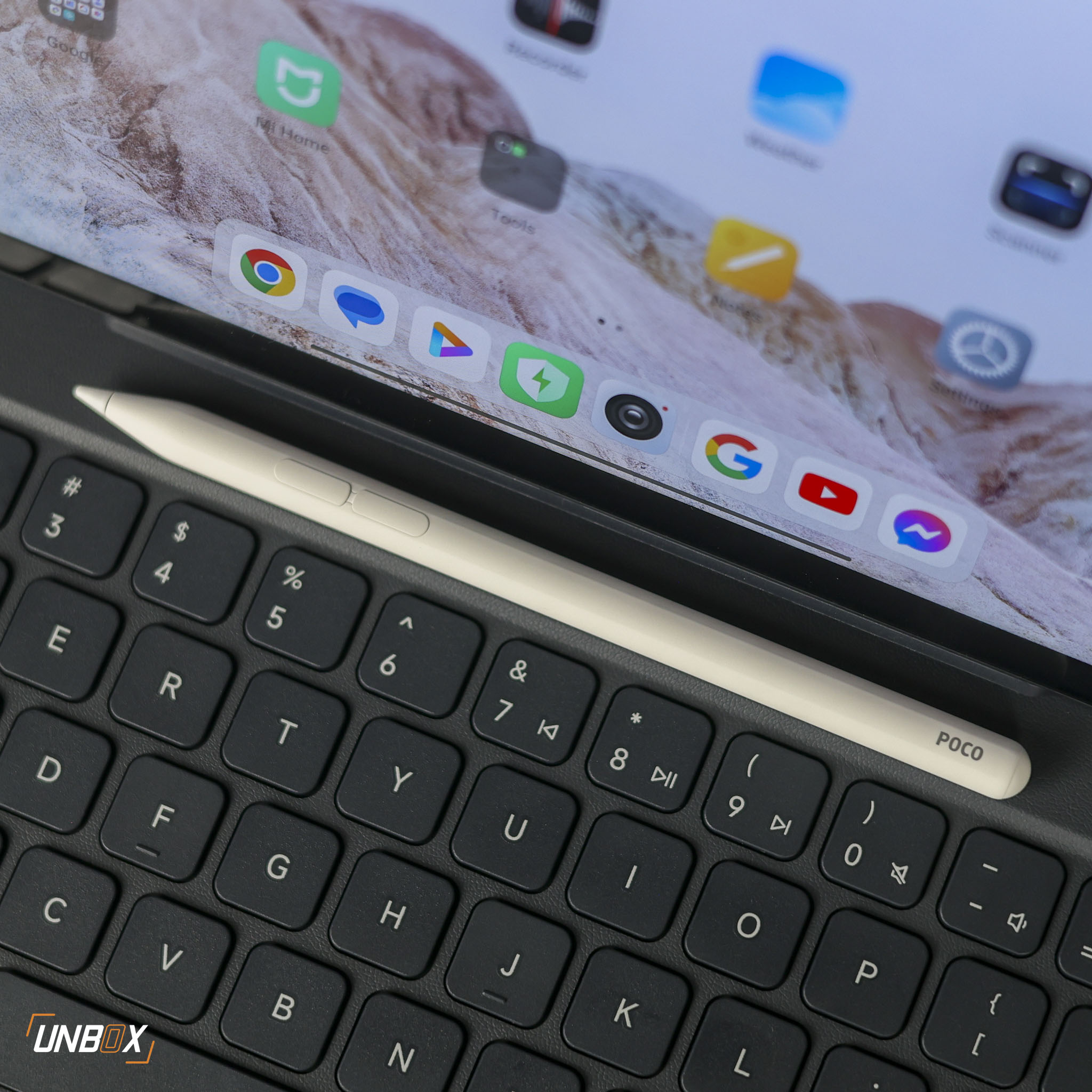
POCO Pad Review Philippines: Wrap-up and Conclusion
On paper, the POCO Pad does offer great value with the internals it packs and the few smaller details like having a headphone jack and supporting MicroSD cards with a huge capacity. The POCO Pad has a lot of potential with HyperOS–however, it’s still limited for now as the necessary updates have yet to arrive on retail units.
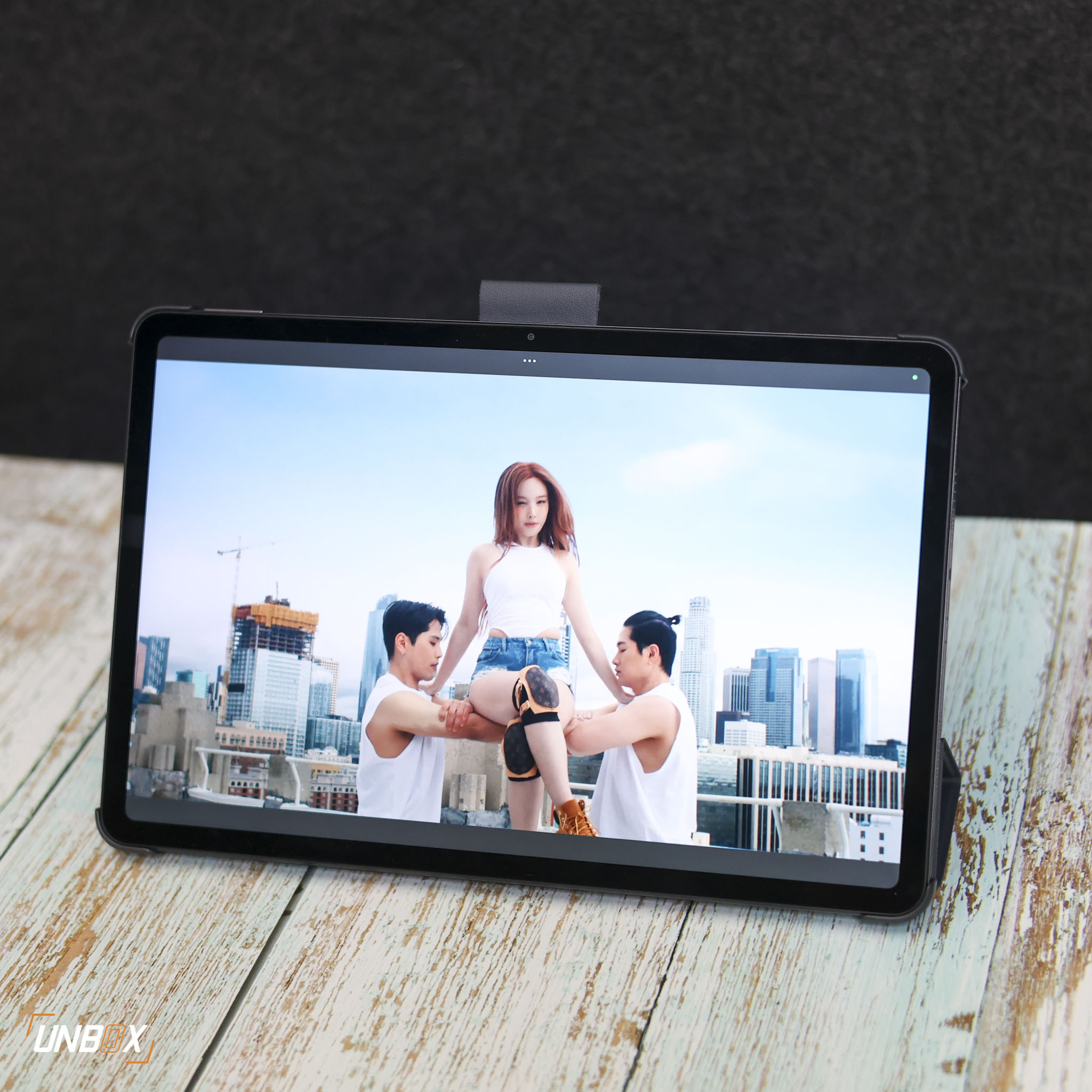
POCO Pad Review Philippines: Price
The POCO Pad has an official price of Php 15,999 and is available in Lazada and Shopee.


